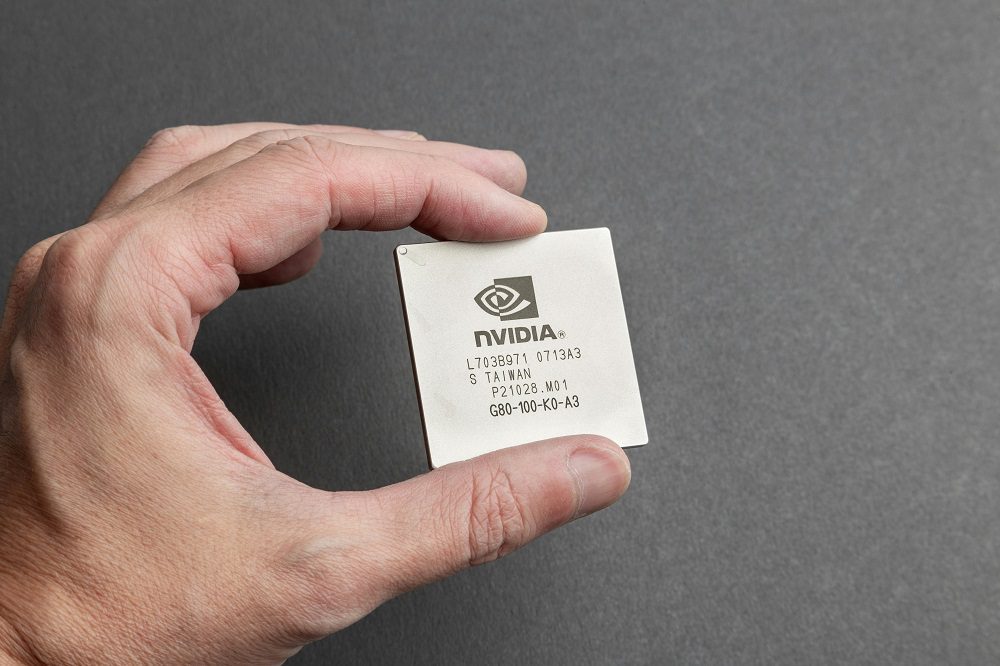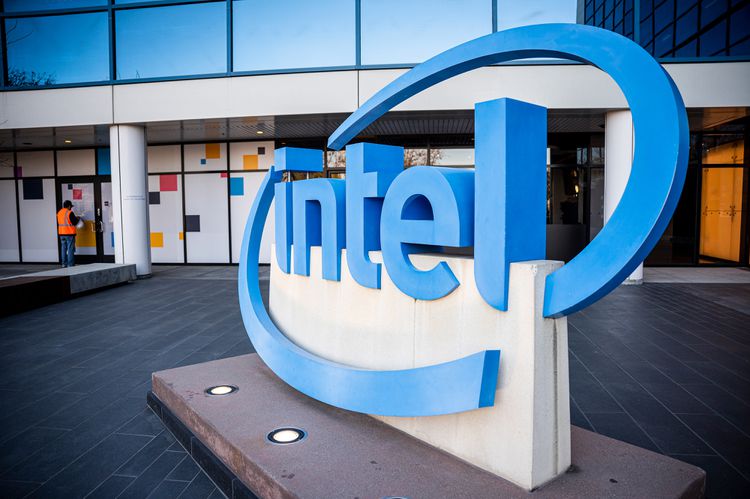
Nvidia AI surge has propelled the chipmaker to reclaim its position as the world’s most valuable company, overtaking Microsoft with a market capitalization of $3.45 trillion. On Tuesday, Nvidia’s shares rose 2.8%, closing at $141.22, driven by renewed investor optimism about its dominance in the artificial intelligence (AI) sector. The company’s stock has soared over 45% since its April low, adding a staggering $1 trillion in market value. Last week’s quarterly results showcased a 69% revenue surge to $44 billion, signaling that Big Tech’s spending on AI infrastructure remains robust. This article explores Nvidia’s meteoric rise, the factors fueling its growth, and what lies ahead for the AI chipmaking giant.
Key Takeaways
Nvidia’s market cap reached $3.45 trillion, surpassing Microsoft as the world’s most valuable company.
A 69% revenue increase to $44 billion reflects strong demand for Nvidia’s AI chips.
Big Tech’s massive AI investments continue to drive Nvidia’s growth.
The company’s stock surged 45% since April, adding $1 trillion in market value.
Nvidia’s innovations, like the Blackwell platform, solidify its AI market leadership.
The Rise of Nvidia in the AI Revolution
Contents
- 1 A Leader in AI Chipmaking
- 2 Record-Breaking Financial Performance
- 3 Stock Market Triumph
- 4 Unprecedented Demand for AI Chips
- 5 Big Tech’s AI Investment Spree
- 6 Innovation and Product Leadership
- 7 Market Volatility and AI Bubble Fears
- 8 Regulatory and Competitive Pressures
- 9 Transforming Industries
- 10 Data Center Boom
- 11 Economic Implications
- 12 Sustained Growth Prospects
- 13 Global Expansion
- 14 Long-Term Challenges
- 15 1. What is driving the Nvidia AI surge?
- 16 2. How much has Nvidia’s stock grown in 2025?
- 17 3. What are Nvidia’s key AI products?
- 18 4. Why is Big Tech spending so much on AI?
- 19 5. Are there risks to Nvidia’s growth?
- 20 6. How does Nvidia’s CUDA ecosystem contribute to its dominance?
- 21 7. What is the Blackwell platform?
- 22 8. How is Nvidia expanding globally?
- 23 9. What are analysts saying about Nvidia’s stock?
- 24 10. How does Nvidia’s AI surge impact other industries?
A Leader in AI Chipmaking
Nvidia’s ascent to the top of the global market is no accident. The company has positioned itself as the backbone of the AI revolution, providing the specialized chips essential for training and operating advanced AI systems. Unlike traditional processors, Nvidia’s graphics processing units (GPUs) excel at the parallel computing tasks required for machine learning, deep learning, and generative AI applications like ChatGPT. This technological edge has made Nvidia the go-to supplier for tech giants racing to integrate AI into their products and services.
Record-Breaking Financial Performance
Nvidia’s recent quarterly results underscore its dominance. The company reported $44.1 billion in revenue for the quarter ending January 2025, a 69% increase from the previous year. Data center revenue, which includes AI chip sales, surged 93% to $35.58 billion, driven by demand from companies like Amazon, Microsoft, Alphabet, and Meta. These tech giants are investing heavily in AI data centers, with each planning to spend $65 billion to $100 billion in 2025 alone. Nvidia’s profit also soared 80% to $22.09 billion, exceeding Wall Street’s expectations of $38.32 billion in sales and $21.08 billion in profit.
Stock Market Triumph
The Nvidia AI surge is reflected in its stock performance. Since hitting a low in April, the stock has climbed over 45%, adding $1 trillion to its market cap. On Tuesday, shares closed at $141.22, pushing Nvidia’s valuation to $3.45 trillion, just ahead of Microsoft’s $3.44 trillion. This milestone cements Nvidia’s status among the tech elite, joining the likes of Apple, Microsoft, Amazon, and Alphabet in the $1 trillion+ club. The stock’s 16% weekly gain in May 2025, fueled by optimism about Nvidia’s expansion in markets like Saudi Arabia and the UAE, further highlights its momentum.
Factors Fueling Nvidia’s AI Dominance
Unprecedented Demand for AI Chips
The global appetite for AI is insatiable, and Nvidia is at the forefront of meeting this demand. CEO Jensen Huang has described the AI market as reaching a “tipping point,” with companies across industries adopting generative AI technologies. Nvidia’s GPUs, particularly the H100 and the newer Blackwell platform, are critical for training large language models (LLMs) and powering AI-driven applications. For instance, Microsoft’s deployment of “hundreds of thousands” of Nvidia’s GB200 GPUs for OpenAI underscores the scale of demand.
Big Tech’s AI Investment Spree
Big Tech’s aggressive spending on AI infrastructure is a key driver of Nvidia’s growth. In 2024, Amazon, Microsoft, Alphabet, and Meta collectively poured tens of billions into AI data centers, with plans to increase investments significantly in 2025. This spending is not limited to the U.S.; Nvidia’s deals with Saudi Arabia’s Humain and potential agreements in the UAE highlight its global reach. These investments are expected to continue, with analysts projecting AI capital expenditure to reach $1 trillion by 2027.
Innovation and Product Leadership
Nvidia’s ability to innovate keeps it ahead of competitors. The Blackwell platform, unveiled at the 2024 GTC conference, is described as a “game changer” for AI computing. With plans to release new chip families annually, such as the upcoming Rubin platform in 2026, Nvidia ensures its technology remains cutting-edge. The company’s CUDA ecosystem further solidifies its market share, estimated at 70-95% in AI training, making it difficult for rivals like AMD to compete.
Challenges and Concerns
Market Volatility and AI Bubble Fears
Despite its success, Nvidia’s stock has faced volatility. In January 2025, the company lost $600 billion in market value in a single day after Chinese startup DeepSeek introduced a low-cost AI model, raising concerns about reduced demand for Nvidia’s chips. Investors also worry about a potential AI bubble, with some analysts cautioning that overvalued AI stocks could correct if Big Tech’s spending slows. However, Nvidia’s strong quarterly results and projected 65% revenue growth to $43 billion in the current quarter suggest these fears may be premature.
Regulatory and Competitive Pressures
Nvidia’s dominance has attracted scrutiny. The U.S. Department of Justice launched an antitrust investigation in August 2024, with rival chipmakers alleging Nvidia abuses its market position. Additionally, competitors like AMD and Intel are investing in AI chips, with Intel and TSMC forming a U.S.-based chipmaking joint venture. While these pose long-term threats, analysts believe Nvidia’s technological lead and ecosystem will maintain its edge in the near term.
The Broader Impact of Nvidia AI Surge
Transforming Industries
Nvidia’s chips are not just powering tech giants; they’re transforming industries. From healthcare to automotive, AI applications are reshaping how businesses operate. Nvidia’s automotive and robotics segment reported $567 million in revenue, a significant increase, reflecting its role in smart cities and autonomous vehicles. The company’s partnerships with industry leaders ensure its technology is embedded in the next generation of innovations.
Data Center Boom
The Nvidia AI surge is fueling a data center boom. Global demand for data centers is projected to reach 35 gigawatts by 2030, up from 17 gigawatts in 2022, with construction spending expected to hit $50 billion. Nvidia’s chips are central to this growth, as companies race to build infrastructure for generative AI. This trend benefits not only Nvidia but also related sectors like real estate and energy, as data centers require significant power and space.
Economic Implications
Nvidia’s rise has broader economic implications. Its stock performance has driven major indices like the S&P 500 and Nasdaq to record highs, with tech stocks accounting for nearly 30% of the S&P 500’s value. However, this concentration raises concerns about market stability, as a correction in AI stocks could ripple across global markets. Despite these risks, analysts remain bullish, with 20 of 21 analysts rating Nvidia as a “buy” and an average price target of $177, implying 31% upside.
What Lies Ahead for Nvidia
Sustained Growth Prospects
Analysts are optimistic about Nvidia’s future, citing its unmatched position in the AI market. Morgan Stanley has named Nvidia a “top pick,” highlighting its research and development budget and strong relationships with cloud providers. The company’s keynote at the CES 2025 trade show, led by CEO Jensen Huang, is expected to provide further catalysts for stock growth. With AI demand projected to grow exponentially, Nvidia is well-positioned to capitalize on this trend.
Global Expansion
Nvidia’s international expansion, particularly in the Middle East, offsets challenges like U.S.-China tariffs. Deals with Saudi Arabia’s Humain and potential agreements in the UAE demonstrate Nvidia’s ability to tap into emerging markets. These strategic moves ensure the company remains a global leader in AI infrastructure.
Long-Term Challenges
While Nvidia’s short-term outlook is strong, long-term challenges include sustaining growth as competition intensifies and Big Tech’s return on AI investments is scrutinized. Investors will closely watch whether Nvidia can maintain its 70-95% market share in AI training and continue innovating to stay ahead.
Summary
The Nvidia AI surge has redefined the tech landscape, propelling the chipmaker to a $3.45 trillion valuation and the title of the world’s most valuable company. Its 69% revenue growth to $44 billion, driven by Big Tech’s AI investments, underscores its dominance. Despite concerns about market volatility and regulatory scrutiny, Nvidia’s innovation, global expansion, and unmatched market position make it a powerhouse in the AI revolution. As industries transform and data center demand soars, Nvidia’s influence will continue to shape the future of technology.
FAQs
1. What is driving the Nvidia AI surge?
Nvidia’s surge is fueled by high demand for its AI chips, particularly from Big Tech companies like Amazon, Microsoft, and Alphabet, which are investing heavily in AI data centers.
2. How much has Nvidia’s stock grown in 2025?
Nvidia’s stock has risen over 45% since its April low, adding $1 trillion to its market cap, reaching $3.45 trillion.
3. What are Nvidia’s key AI products?
Nvidia’s key AI products include its H100 GPUs and the Blackwell platform, with the upcoming Rubin platform set for release in 2026.
4. Why is Big Tech spending so much on AI?
Big Tech is investing $65 billion to $100 billion each in 2025 to build AI data centers, aiming to integrate AI into products and services like chatbots and autonomous systems.
5. Are there risks to Nvidia’s growth?
Yes, risks include market volatility, potential AI bubble concerns, regulatory scrutiny, and competition from rivals like AMD and Intel.
6. How does Nvidia’s CUDA ecosystem contribute to its dominance?
The CUDA ecosystem provides a robust platform for AI development, giving Nvidia a 70-95% market share in AI training.
7. What is the Blackwell platform?
The Blackwell platform is Nvidia’s next-generation AI system, described as a “game changer” for its advanced computing capabilities.
8. How is Nvidia expanding globally?
Nvidia is expanding through deals like supplying chips to Saudi Arabia’s Humain and potential agreements in the UAE, offsetting challenges like U.S.-China tariffs.
9. What are analysts saying about Nvidia’s stock?
Analysts are overwhelmingly bullish, with 20 of 21 rating it a “buy” and an average price target of $177, implying 31% upside.
10. How does Nvidia’s AI surge impact other industries?
Nvidia’s chips are transforming industries like healthcare, automotive, and data centers, driving innovation in AI applications and infrastructure.



